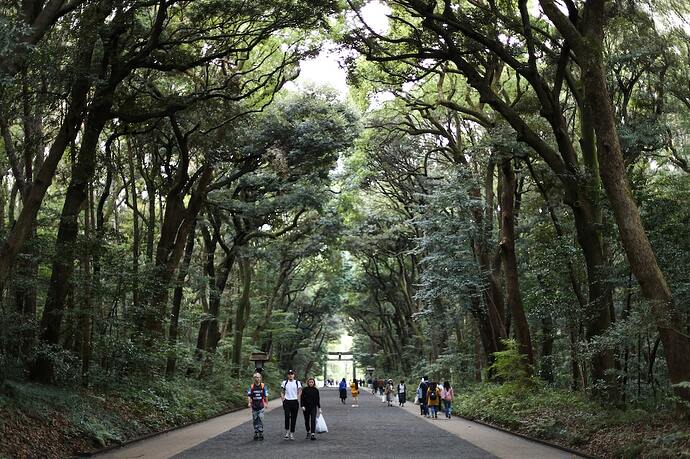The Meiji Era, also known as the Meiji period, was a time of significant change in Japan. It spanned from 1868 to 1912 and saw the country transform from a feudal society to a modern, industrialized nation. During this time, Japan underwent a sweeping modernization campaign, which included the adoption of Western technology and social customs. This era was named after Emperor Meiji, who ascended to the throne in 1867, but it was mainly driven by a group of reform-minded statesmen, known as the Meiji oligarchs.
Background
Prior to the Meiji period, Japan was ruled by a shogunate, a centralized military government led by a shogun. The shogunate ruled from its headquarters in Edo, now known as Tokyo, and was responsible for maintaining order and stability throughout the country. However, by the mid-19th century, Japan was increasingly isolated from the rest of the world, with only limited contact with a few Western countries. This isolationism had left Japan lagging behind the rest of the world in terms of technology and economic development.
In 1853, the United States sent a fleet of warships, led by Commodore Matthew Perry, to Japan to demand the opening of its ports to American trade. This was the beginning of a period of intense pressure from Western powers on Japan to open up to the world. The shogunate, weakened by internal divisions, was unable to resist these demands.
In 1868, a group of samurai from southern Japan, known as the Satsuma-Chōshū alliance, overthrew the shogunate and restored power to the emperor. This event is known as the Meiji Restoration and marked the beginning of a new era in Japanese history.
Modernization
One of the main goals of the Meiji oligarchs was to modernize Japan and catch up with the rest of the world. This involved adopting Western technology, industrializing the economy, and reforming social customs. One of the first steps taken was the establishment of a modern conscript army modeled on Western armies. The old feudal system was abolished, and a centralized government was created, based on the French model. A new legal system, based on German law, was also introduced.
The oligarchs recognized the importance of education in modernizing the country, and a universal system of education was introduced. This helped to create a literate population, which was crucial for the success of industrialization. Universities and technical schools were also established to provide specialized training in the latest technologies.
In terms of industry, the government provided subsidies and support to encourage the growth of new industries. This led to the creation of modern factories and the development of Japan’s own steel industry. The railways and telegraph system were also established, linking the various regions of Japan and facilitating the movement of people and goods.
Social Reforms
Alongside modernization efforts, the Meiji oligarchs implemented a series of social reforms. One of the most significant was the abolition of the feudal class system, which had divided Japanese society for centuries. The samurai class, which had previously been the ruling class, was disbanded, and samurai were given the option to become part of the new bureaucratic class or take up other professions.
Another major reform was the introduction of a new legal system. This was based on German law and replaced the old laws, which were based on Confucian principles. One of the most significant changes was the introduction of equality before the law, which had not existed before.
The Meiji oligarchs were also committed to promoting equality for women. Women were no longer required to have their feet bound, a tradition that had been practiced for centuries. The first schools for girls were also established, and women were given the right to receive an education.
Impact
The Meiji era had a significant impact on Japanese society. Japan rapidly modernized and became a major industrial power, exporting goods to the rest of the world. The country also became more politically stable and less susceptible to external pressures. Japan’s success in modernizing and asserting its independence inspired other Asian countries to do the same.
However, the modernization of Japan also had some negative consequences. The government implemented policies that favored industrialization at the expense of traditional agriculture. This led to a decline in rural areas and the growth of urban areas. The gap between rich and poor also widened, and many workers were subjected to poor working and living conditions.
Conclusion
The Meiji period was a time of significant change in Japan. The country rapidly modernized and became a major industrial power, which had a significant impact on global affairs. However, this modernization came at a cost, as many traditional practices and social structures were abolished or changed. Despite this, the Meiji era remains a crucial period in Japanese history, which laid the foundations for the country’s subsequent success as a modern, industrialized nation.
Disclaimer
6do Encyclopedia represents the inaugural AI-driven knowledge repository, and we cordially invite all community users to collaborate and contribute to the enhancement of its accuracy and completeness.
Should you identify any inaccuracies or discrepancies, we respectfully request that you promptly bring these to our attention. Furthermore, you are encouraged to engage in dialogue with the 6do AI chatbot for clarifications.
Please be advised that when utilizing the resources provided by 6do Encyclopedia, users must exercise due care and diligence with respect to the information contained therein. We expressly disclaim any and all legal liabilities arising from the use of such content.




